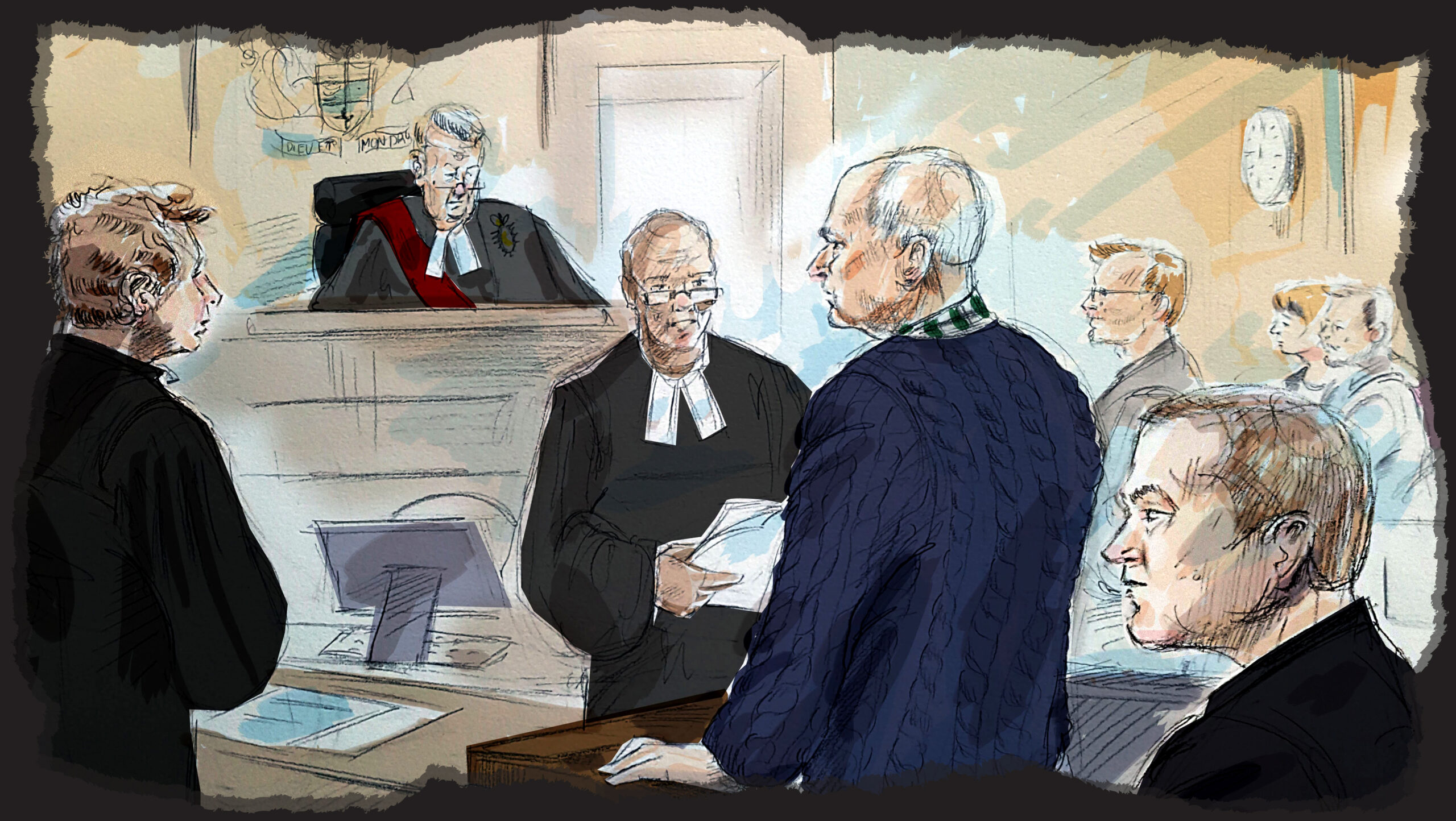After pleading guilty to eight counts of first-degree murder, serial killer Bruce McArthur returned to a Toronto courthouse Monday for sentencing.
During sentencing, the courts will hear from Crown lawyer Michael Cantlon, as well as dozens of the victims’ friends, family members and loved ones.
McArthur — who has admitted to the murders of Selim Esen, Andrew Kinsman, Majeed Kayhan, Dean Lisowick, Soroush Mahmudi, Skandaraj Navaratnam, Abdulbasir Faizi and Kirushna Kanagaratnam — will not be eligible for parole for 25 years. Ontario Superior Court Justice John McMahon will decide whether McArthur will serve his sentences concurrently or consecutively.
Here’s what we’ve learned at the hearing so far.
Police confirm community suspicions
At the start of the hearing, Cantlon validated the fears of Toronto’s LGBTQ2 communities. “For years, members of the LGBTQ community believed they were being targeted by a killer,” Cantlon told the court. “They were right.”
McArthur has kept quiet
The statement of facts presented to the courts does not appear to include any details provided by McArthur himself. Rather, details of the crimes were compiled through the police’s own investigation into McArthur.
McArthur was interviewed by police about the disappearance of three of his victims — and let go
As part of Project Houston’s 2012 investigation into the disappearances of Navaratnam, Kayhan and Faizi, police interviewed McArthur as a witness — not a suspect — because he knew all three men.
McArthur was released after an assault in 2016
McArthur was arrested but not charged for attempting to choke a man in the back of his van in June 2016. The man said he was laid down on a fur coat, one that appeared to be the same as in the photos McArthur took of his victims.
McArthur kept tabs on the missing men
On McArthur’s computer, investigators found saved images of the missing posters of Navaratnam, Kayhan and Faizi, as well as news articles about Esen and Kinsman’s disappearances.
Police intervened before McArthur could harm a possible ninth victim
When McArthur was arrested last year, a man named “John” was found handcuffed on his bed.
“John” is an immigrant and hasn’t disclosed his sexuality to his family. He met McArthur online and had an intimate relationship with the serial killer. On that day, “John” recalled McArthur asking him if his family knew where he was going, to which he responded that their meeting was a “secret.”
“John” recalled McArthur pressuring him to rush to get naked because his son and/or neighbour might arrive. McArthur then put a bag over the victim’s face, and when “John” resisted and successfully removed the bag, McArthur tried to cover his mouth with tape.
Unbeknownst to McArthur, he was already under police surveillance at the time and police busted into his apartment when they saw him bringing “John” home.
Cantlon said investigators believe McArthur doesn’t have any other victims.
McArthur kept photos and souvenirs of his victims
Investigators found hundreds of photos, primarily from social media, of each of the victims on his computer and digital devices, including staged photos taken by McArthur after their deaths. McArthur also had nine folders on his computer containing these photos, labelled after his victims, including “John.” McArthur also kept jewelry and other personal belongings of his victims.
The victims McArthur chose all had commonalities
Cantlon said that there is evidence to suggest that McArthur purposely sought out men who were vulnerable: men he met on dating apps; men who were not out to their families or felt they could not come out; men who had difficulties securing housing or were facing financial hardship; men who were immigrants, predominantly of South Asian or Middle Eastern descent; and men with facial hair and/or beards.
Communities respond
The hearing also gave Toronto’s LGBTQ2 communities an opportunity to express their heartbreak and upset in the courts.
Family members and loved ones spoke about the victims’ lives and what has been lost:
Victim impact statements begin now. These are chances for friends and family to offer insight into what they’ve lost. Just one quote:
“Selim spent his life asking why. We will continue his quest.”— Justin Ling (@Justin_Ling) February 4, 2019
Reverend Deanna Dudley spoke on behalf of the Metropolitan Community Church:
“We should be angry when our community becomes a hunting ground,” she says.
Advertisement— Alyshah Hasham (@alysanmati) February 4, 2019
A spokesperson for The 519 provided a victim impact statement, noting the systemic issues queer and trans people face:
The emotional impact of McArthur’s arrest, plea etc. has been wide-reaching and disruptive. This is a community that experiences higher levels of violence. Now they are trying to heal in the face of highly targeted violence.
— Alyshah Hasham (@alysanmati) February 4, 2019
Others watched in solidarity:
Keep thinking about one of the reasons the victims were targeted was because of homophobia and racism. This is not just an individual act, it’s a result of institutions that have policies and practices that allow hate to thrive. #McArthur https://t.co/JaElaEFGMg
— Farrah Khan (@farrahsafiakhan) February 4, 2019
Methodologies aside (which were unbelievably consistent), the biggest thing we learned was how spectacularly @TorontoPolice botched this case, and how many people then lost their lives because of it.
They had Bruce McArthur caught red handed attempting a murder, and let him go.
— Anthony Oliveira (@meakoopa) February 4, 2019




 Why you can trust Xtra
Why you can trust Xtra


